How to Keep a Gardening Journal + 11 Ideas to Inspire You
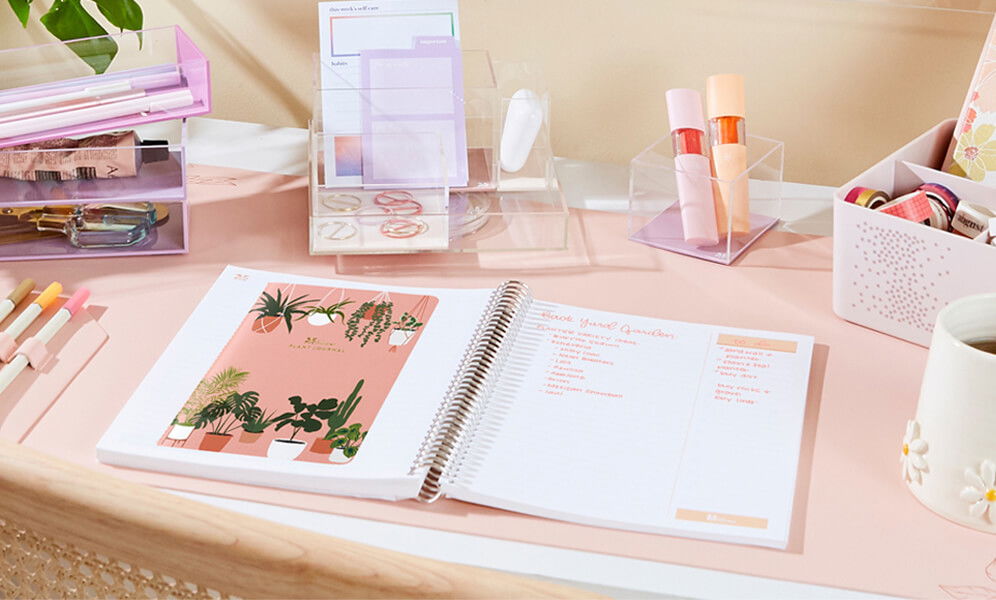
Gardening and keeping a garden journal is a rewarding and fulfilling hobby that allows you to unplug, de-stress, and connect with nature while creating beautiful outdoor spaces.
Whether you're a seasoned gardener or just starting out, keeping a journal can be an invaluable tool to enhance your gardening experience, one page at a time. Let’s dig into why you should start a garden journal, creative ideas to inspire your journaling, practical tips on how to keep a garden journal, and strategies for successful journaling.
Why Should You Start a Garden Journal?
Keeping a garden journal offers numerous benefits that can help you become a more knowledgeable and successful gardener:
Helps You Track Your Progress
Whether you have a plant, flower, or vegetable garden (or a lovely combo), a garden journal , garden planner, or spiral notebookwith gardening content allows you to document your garden's evolution over time. By recording key details such as planting dates, weather conditions, and growth patterns, you can track your progress across the pages and learn from your successes and challenges. This can be a great motivator to keep gardening.
Enhances Your Planning
Your garden book becomes a valuable resource for future planning. By reviewing your past entries, you can make informed decisions about plant placement, crop rotations, and garden design. This helps you optimize your garden space and maximize your yields.
Helps You Identify Patterns
By consistently recording valuable information about your garden, you can identify patterns and trends. You'll gain insights into which plants thrive in your specific climate, detect recurring pest or disease issues, and determine the best time for planting and harvesting.
Improves Your Problem-Solving Skills
When faced with garden-related problems, your journal’s pages are your leafy reference guide. You can identify past solutions to similar issues, making troubleshooting easier and more effective.
Fosters Your Creativity
A garden journal provides a creative outlet. You can experiment with different journaling techniques, incorporate art and pressed flowers, and express your personal reflections and inspirations.
Helps You Create a Garden Legacy
Your journal becomes a record of your gardening journey. It's a valuable resource that can be passed down to future generations, inspiring and informing future gardeners.
Keeping a garden journal can also be a fun and creative way to document your gardening experiences, offering additional benefits, including:
Improving Your Gardening Skills
A garden journal can help you to track what plants you've planted, when you planted them, and how they've performed. This information can help you to make better decisions about your gardening in the future. For example, if you notice that a certain type of plant doesn't do well in your climate, you can avoid planting it again.
Reducing Your Stress and Anxiety
Gardening and journaling have each been shown to reduce stress and anxiety levels. A garden journal can help you to track your progress and see how gardening has helped you to relax. Journaling helps reduce stress and so does gardening – what a double-relaxing combo!
Improving Your Mood and Mental Health
Gardening can also improve your mood and overall mental health. Studies have found that gardening can help to reduce symptoms of depression and anxiety. And journaling offers its own stress-busting benefits.
Increasing Your Knowledge and Understanding of Plants
A garden journal can help you to learn more about plants. You can record information about the plants you've grown, such as their names, growing conditions, and pests and diseases. This information can help you to become a more knowledgeable and informed gardener.
Providing You a Fun and Creative Outlet
Keeping a garden journal can be a fun and creative outlet. You can express yourself by drawing pictures of your plants, writing about your gardening experiences, or even designing your own garden journal.
Connecting You with Nature
Gardening can help you to connect with nature and appreciate the beauty of the natural world. Spending time in nature has been shown to reduce stress, improve mood, and boost creativity. A garden journal can help you to document your connection with nature and remember all the special moments you've shared with your garden. This can also boost feelings of gratitude (which comes with a whole new set of health benefits)!
11 Creative Garden Journal Ideas
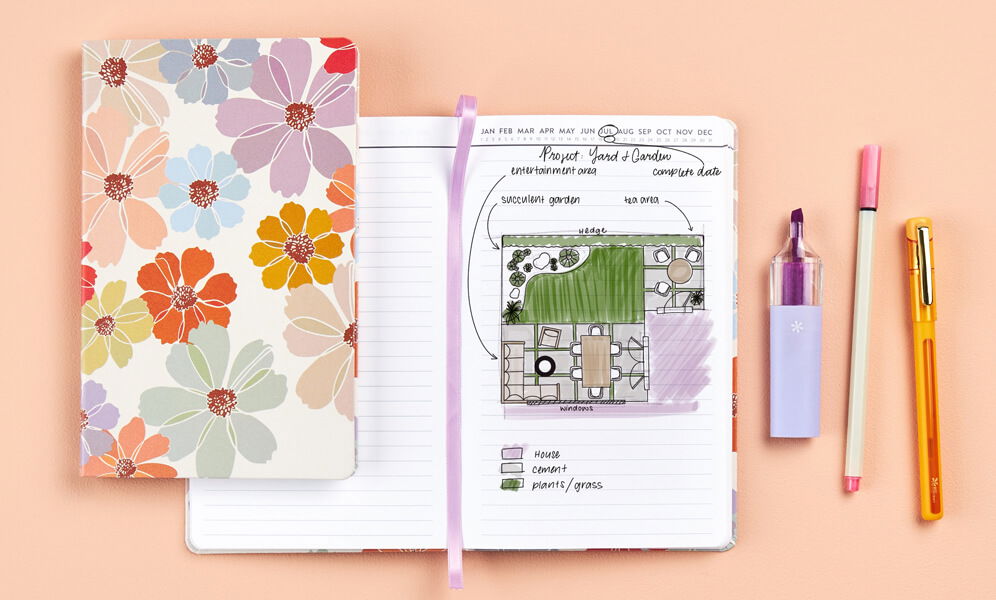
Now that you're convinced about the benefits of keeping a garden journal, let's explore 11 creative ideas to inspire your journaling!
1. Record Key Details About Your Garden and Climate.
Note down essential information about your garden, including its size, soil type, exposure to sunlight, and seeds planted. Note what kind of garden it is (e.g., vegetable garden). Record climate details such as average temperatures, frost dates, and rainfall patterns, which will help inform you for next year.
2. Create Plant Profiles.
Dedicate pages to individual plants or plant varieties. Include information such as the plant's seeds, common and botanical names, growth habits, care requirements, and notable characteristics.
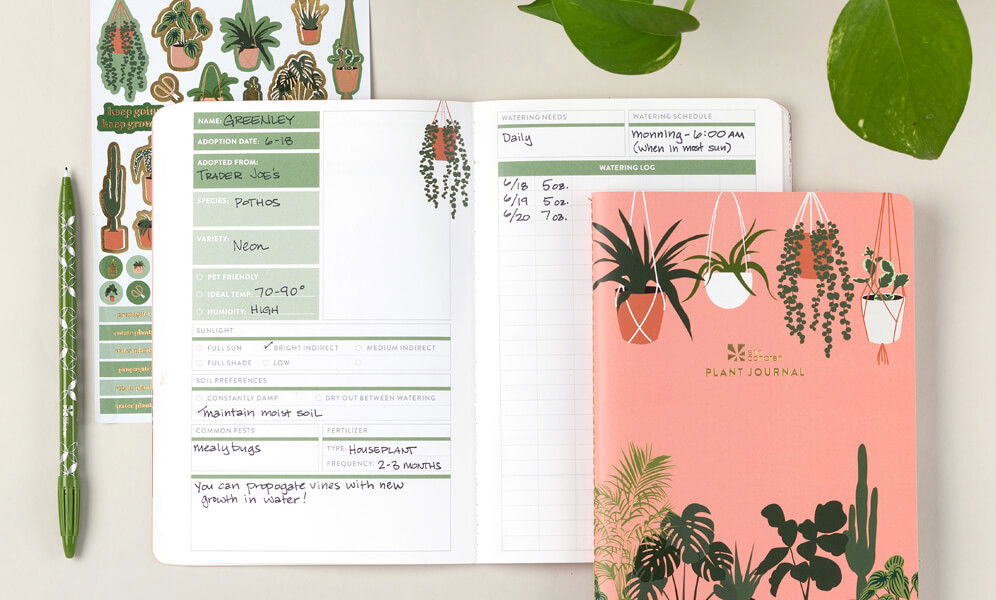
3. Sketch Garden Layouts and Design Ideas.
Use the blank pages in your journal, notebook, bullet journal, or plant journalto sketch garden layouts, design ideas, and plant arrangements. Visualizing your garden plans helps you bring your ideas to life and make informed decisions about how you place your plants.
4. Jot Seasonal Notes.
Add notes to your journal to document the changes in your garden throughout the growing season and year-round seasons to help you plan for the next year. Note the first blooms of spring, the vibrant colors of summer, the changing foliage of autumn, and the dormant state of winter. In these notes, describe the scents, sounds, and sensations that accompany each season.
5. Note Pest and Disease Issues.
Keep track of any pest or disease problems you encounter in your garden. Takes notes to record the affected plants, symptoms, and any treatments or remedies you use. This helps you identify recurring issues and implement preventive measures.
6. Include Nature-Inspired Art or Pressed Flowers.
Add a touch of creativity to your journal by incorporating nature-inspired art, such as sketches, watercolor paintings, or pressed flowers between the pages. This adds a visual dimension to your entries and allows you to showcase your artistic side.
7. Add Personal Reflections.
Use your journal as a personal space to reflect on your gardening experiences and emotions. Fill the pages with the joys and challenges you encounter, the sense of accomplishment you feel when a plant thrives, or the lessons learned from gardening setbacks. These personal reflections make your journal more meaningful and serve as a reminder of your growth as a gardener. Imagine how fun and rewarding it will be to review your journal years later!
8. Incorporate Gardening Quotes and Poetry.
Sprinkle your journal pages with inspiring gardening quotes or your favorite poems about nature and gardening. These can serve as sources of motivation and add an artistic flair to your entries.
9. Capture Memories with Photos and Collages.
Include photographs of your flower, plant, or vegetable garden at different stages of growth throughout the year. Create collages with pictures, dried flowers, and other mementos from your gardening adventures. These visual representations preserve memories and add visual interest to your journal.
10. Note Your Successes and Challenges.
Make a dedicated section in your journal to celebrate your gardening successes. Write about the seeds that grew into plants and thrived, the bountiful harvests, and the moments that brought you joy. Similarly, record the challenges you faced, the lessons learned, and the strategies you employed to overcome them. This helps you track your progress and provides inspiration for endeavors in the next year.
11. List Gardening Tips and Tricks, Project Ideas, or Plant Combinations to Try.
Use your journal to compile a list of gardening tips and tricks you come across. Jot down your favorite seed packets and project ideas, such as building a raised bed or creating a compost system. Note down plant combinations you find aesthetically pleasing or companion planting suggestions. These lists become a valuable resource for future reference and experimentation.
How to Keep a Garden Journal
Now that you have a plethora of creative ideas for your garden journal, let's delve into the practical aspects of keeping and maintaining one.
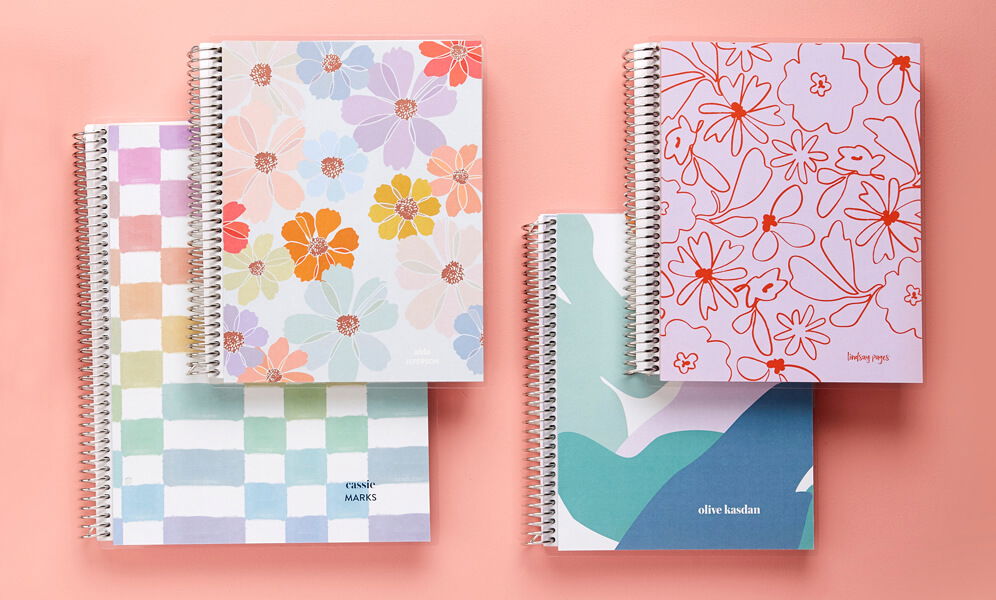
Choosing a Notebook or Journal
Select a notebook or journalthat suits your preferences. It can be a traditional paper journal, a blank sketchbook, a guided journal, or even a bullet journal. Choose one that offers enough space for your entries and allows for easy organization.
Essential Tools and Supplies
Gather the tools and supplies you'll need for your journaling journey. These may include pens, pencils, colored markers, watercolors, glue sticks, scissors, and a camera or smartphone for capturing photos.
Setting Up Your Garden Journal
Begin by creating an index or table of contents at the beginning of your journal. This will help you navigate and find specific entries easily. Divide your journal into sections based on the creative ideas mentioned earlier, using tabs or page markers to differentiate between sections.
Maintaining and Using Your Gardening Journal
Make it a habit to consistently record your observations, experiences, and thoughts in your garden journal. Update it regularly, whether it's daily, weekly, or monthly, depending on your gardening activities. Use your journal as a reference guide when planning future gardening tasks or troubleshooting issues.
Tips for Successful Garden Journaling
To make the most of your garden journaling experience throughout the year, here are some tips to keep in mind:
Be Consistent.
Consistency is key to reaping the full benefits of a garden journal. Make an effort to write in your journal regularly, even if it's just a quick note or sketch. This helps you build a comprehensive record of your garden's progress.
Use Strategies for Staying Motivated.
Find ways to stay motivated and make journaling a pleasurable activity. Set aside dedicated time for journaling, create a comfortable and inspiring space, and reward yourself for your journaling milestones.
Review Your Journal Regularly.
Set aside time to review your journal periodically. Reflect on your past entries, identify patterns, and draw insights that can inform your future gardening decisions. Celebrate your successes and learn from your challenges.
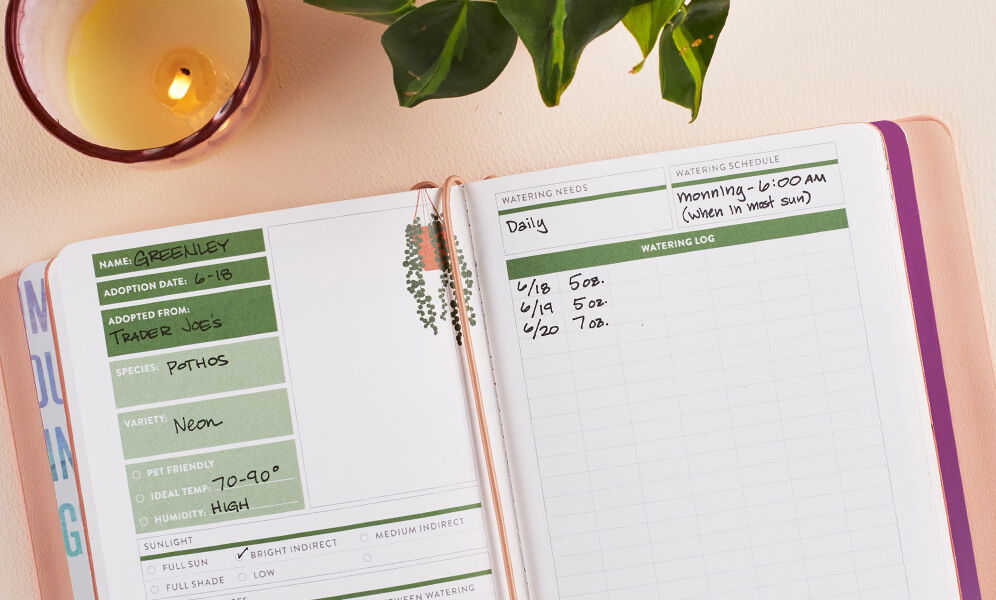
Reflect on Past Experiences for Better Planning.
When planning for the upcoming gardening season, refer back to your journal entries from previous years. Take note of what worked well, what didn't, and any improvements or adjustments you can make. Learn from your past experiences to make more informed decisions and set realistic goals.
Keeping a garden journal is a delightful and practical way to enhance your gardening experience. By documenting your garden's progress, recording key details, and expressing your creativity, you'll become a more knowledgeable and successful gardener. Remember to choose a journal that suits your preferences, gather the necessary tools and supplies, and establish a consistent journaling routine. Review your journal regularly, reflect on past experiences, and use it as a valuable resource for future gardening endeavors. So grab a new journal, head out to the garden, and let your gardening journey unfold on its pages!